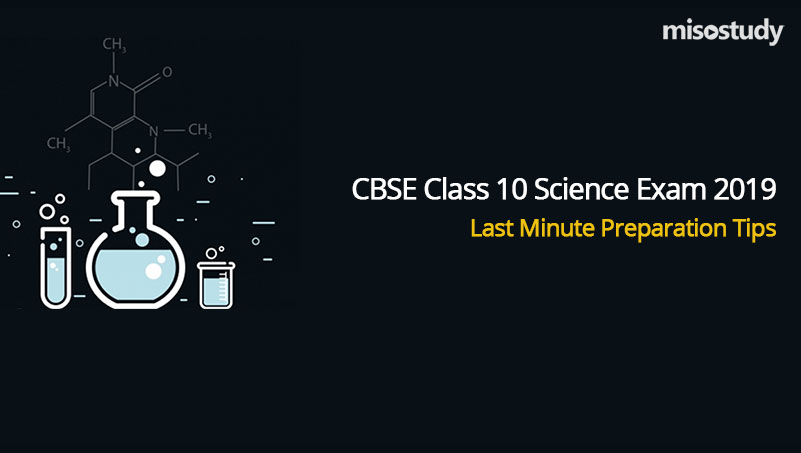

Flat 50% off
BUY NOWEnds in

The next examination to be taken by class 10 students of all CBSE affiliated schools is the Science paper, which will be conducted on March 13.
The CBSE Class 10 Science is mainly categorised into three sub-divisions: Chemistry, Physics and Biology. So, in order to score in their Class 10 Science Exam, students must focus on all these three sub-divisions while revising their syllabus.
Here, we have enlisted the important topics from all units. Students must take a quick look at all these important topics and recall them at the same time. If you are in doubt in any topic then revise the same form your textbook or notes.
Unit I: Chemical Substances-Nature and Behaviour
1. Chemical Reactions and Equations
• Different types of chemical reactions
2. Acids, bases and salts:
• Reactions of acids and bases
• Different types of salts and their chemical formula, formation and uses
• Water of crystallization
3. Metals and Non-metals
• Common reactions of metals and non-metals including their chemical properties
• Occurrence and extraction of metals
• Corrosion
4. Carbon and its Compounds
• Allotropes of carbon
• Functional groups
• Homologous series
• Nomenclature of carbon compounds
• Chemical properties of carbon compounds including Oxidation, Addition and Substitution
• Properties of ethanol and ethanoic acid
• Formation and action of soaps and detergents
5. Periodic Classification of Elements
• Mendeleev’s periodic table
• Modern’s periodic table
Unit II: World of Living
1. Life Processes
• Mode of nutrition in amoeba and human beings
• Respiration: (i) Aerobic and anaerobic (ii) In humans
• Diagrams of Human digestive system and respiratory system
• Construction and working of human heart
• Excretion in humans
2. Control and Coordination
• Structure and functioning of a neuron
• Reflex action
• Diagram of human brain
• Different human hormones and glands secreting them
3. How Do Organisms Reproduce?
• Sexual and asexual reproduction
• Different modes of asexual reproduction
• Sexual reproduction in flowering plants
• Sexual reproduction in Human Beings
• Male reproductive system along with its diagram
• Female reproductive system along with its diagram
• Reproductive health and different contraceptive methods
4. Heredity and Evolution
• Mendel’s pea experiment
• Law of independent assortment
• Sex determination
• Acquired and inherited traits
• Homologous and analogous organs
• Natural selection in beetle population
Unit III: Natural Phenomena
1. Light of Reflection and Refraction
• Image formed by concave and convex mirrors and their ray diagrams
• Image formed by concave and convex lens and their ray diagrams
• Numericals based on mirror and lens formula
2. The Human Eye and the Colourful World
• Human Eye – Structure and Functioning
• Power of accommodation for human eye
• Defects of vision and their correction using suitable lenses (Ray diagrams for same)
• Dispersion of white light passing through the triangular prism
• Formation of rainbow
• Atmospheric refraction and its applications
• Scattering of Light (Tyndall effect) and its applications
Unit IV: Effects of Current
1. Electricity
• Ohm’s law and its verification (Circuit diagram)
• Factors affecting resistance of a conductor
• Numericals based on the series and parallel combinations of resistors
• Joule’s law of heating and electric power
2. Magnetic Effects of Electric Current
• Magnetic field lines in a solenoid
• Right hand thumb rule and left hand rule
• Electromagnetic induction
• Principle, construction and working of electric generator (AC and DC both)
• Principle, construction and working of electric motor
Unit V: Natural Resources
1. Sources of Energy
• Conventional and non-conventional sources of energy
• Characteristics of an ideal fuel
• Uses of solar energy and biogas
2. Our Environment
• Biological magnification
• Ozone layer and its depletion
• Numerical questions based on energy flow (10% energy flow rule)
3. Management of Natural Resources
• Why we need to save resources
• Chipko movement
• Advantages and disadvantages of dams
Students must thoroughly solve the latest CBSE Class 10 Science sample paper, which will help Class 10 students to familiarise the structure of board question paper.
(from:www.jagranjosh.com)